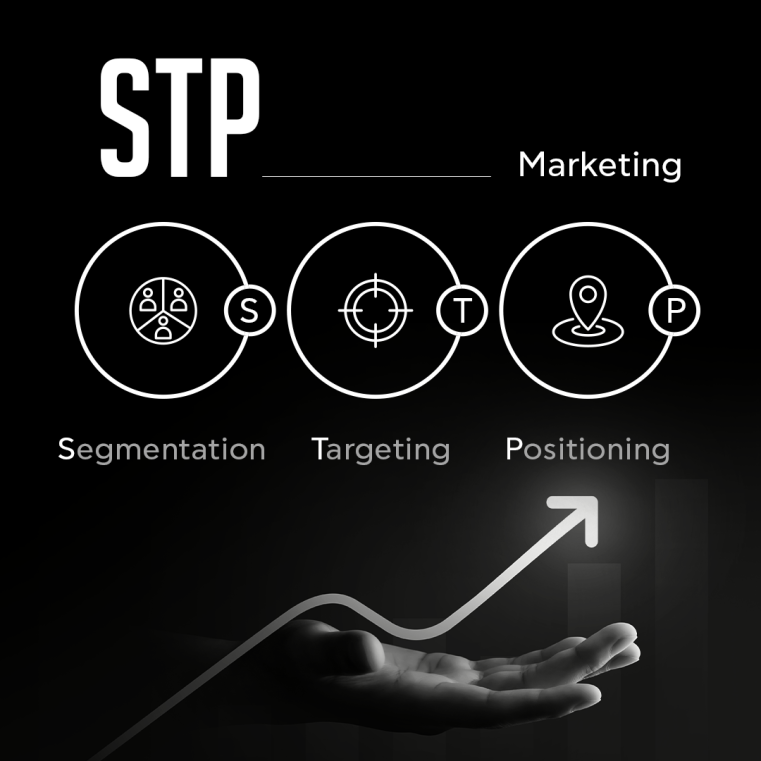Let's Talk

What is STP marketing?
STP marketing – short for Segmentation, Targeting, and Positioning – is a strategic three-step model that guides effective communication of product benefits to distinct customer groups.
Segmentation is splitting a broad market into distinct groups of consumers with shared needs, preferences, or characteristics based on their demographic, geographic, psychographic, and behavioral traits.
Targeting is the process of choosing one or more market segments identified through segmentation and then developing a marketing strategy specifically designed for these groups to maximize the effectiveness of marketing campaigns.
Positioning is how your consumers perceive a product concerning competing brands. The product should resonate with the targeted consumers' preferences and influence their buying decisions.
The essence of STP is to customize your market approach towards selected customer groups and offer a product that meets their expectations. This consumer-centric model enhances communication relevance and personalization.
"There is only one winning strategy. It is to carefully define the target market and direct a superior offering to that target market."
- Philip Kotler
The relationship between market segmentation and targeting
Market segmentation is like preparing the ground for planting targeted marketing strategies. By breaking down the market into distinct groups based on characteristics such as:
- Geography (country, region, state)
- Demographics (age, gender, education level, occupation)
- Psychographics (lifestyle, values, interests)
- Behavior (shopping habits)
businesses can have a better understanding of their potential customers.
This understanding is critical in identifying the segments with the most potential for success based on size, room for growth, and alignment with the company's offerings. It's about finding the right people in the right places and using these insights to deliver messages that resonate. Segmentation is the roadmap that helps businesses reach the right audience using the right message, making targeting strategies more effective and efficient.
The connection between targeting and market positioning
Targeting and market positioning are closely linked in shaping a brand's strategy. Once you've decided which market segments to target, it's crucial to consider how your product or service aligns with their needs and desires.
By understanding their demographics, psychographics, and motivations, you can see your product from their perspective. What sets your offering apart from competitors? What benefits appeal to them the most? This process helps you determine your product differentiation strategy.
This information lets you decide how to position your product in the market. Positioning involves crafting a unique image that makes your product stand out for your target customers. It's about how you want customers to perceive your product and crafting a position that resonates with each target segment. This step is vital before setting up your marketing mix, as it informs how you'll communicate your product's unique benefits and value to your chosen market segments.
Market research and data analysis
Market research and data analysis help you shape how to sell products or services. By interviewing customers and getting feedback, you can get insights into your target audience or decide which group to target with your products or services. Looking at all the information gathered results in more informed decision-making.
Keeping an eye on what's happening in the market is also super important. As a business owner, you need to watch trends, monitor how customers behave, and what your competitors are doing. This mindset helps you update your approach to targeting customers and positioning your products to make sure your brand stays relevant. So basically, market research and analyzing data help your business stay in tune with its customers and keep up with the competition.
Is your business aligned with its market segment?
STP marketing is not a one-off task
Although a business's goals may not shift often, the marketing strategy of segmentation, targeting, and positioning is a continuous activity, not a one-off task. It requires constant reassessment and tweaking to stay relevant. Adapting to shifts in the market, changing consumer preferences, and evolving competition is essential to sustain a robust market presence.
Contact us to scale your business
So, we talked about market segmentation, targeting, and positioning, discussing how important it is to understand your customers in different groups, choose the best groups to sell to, and make your product stand out for these groups.
This approach, known as segmentation, targeting, and positioning (or STP), helps businesses create personalized marketing that speaks to customers, making them more likely to buy and keep coming back. Understanding how these parts work together is the secret to attracting more customers and doing better in business.
